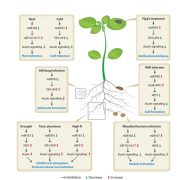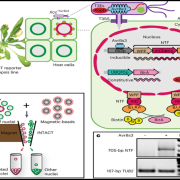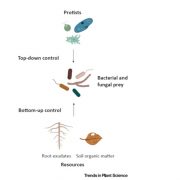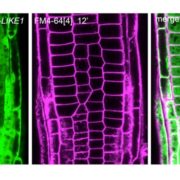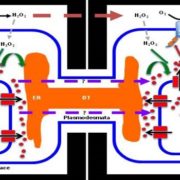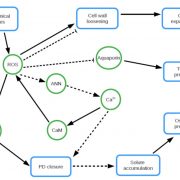Review: Plasmodesmal regulation during plant- pathogen interactions
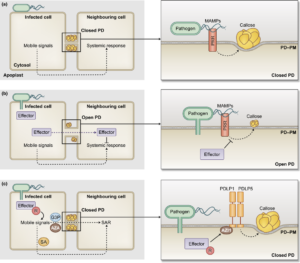 Plasmodesmata are plasma membrane-enclosed pores between cells that were initially described by Tangl in 1879 as ‘open communications’ between protoplasts of endosperm cells. These structures are regulated by callose deposition from the apoplast and play an important regulatory role in stress and developmental responses, although little is yet known about their role in modulating pathogen infection and defense responses. The regulation of plasmodesmata in host-microbe interactions is the topic of Tansley Insight by Cheval and Faulkner. The authors provide a comprehensive overview on the plasmodesmal regulation in innate immune responses and how they trigger systemic defense signaling. Regulation of plasmodesmata function by reactive oxygen species and defense associated small molecules in plant is described. The review also includes the pathogen perspective, describing how pathogens exploit plasmodesmata to promote colonization. Viruses use them for spreading from cell to cell, whereas several fungal pathogens have secreted effectors that either target these channels or use them for preparing the neighboring cells for infection. (Summary by Amey Redkar) New Phytol.
Plasmodesmata are plasma membrane-enclosed pores between cells that were initially described by Tangl in 1879 as ‘open communications’ between protoplasts of endosperm cells. These structures are regulated by callose deposition from the apoplast and play an important regulatory role in stress and developmental responses, although little is yet known about their role in modulating pathogen infection and defense responses. The regulation of plasmodesmata in host-microbe interactions is the topic of Tansley Insight by Cheval and Faulkner. The authors provide a comprehensive overview on the plasmodesmal regulation in innate immune responses and how they trigger systemic defense signaling. Regulation of plasmodesmata function by reactive oxygen species and defense associated small molecules in plant is described. The review also includes the pathogen perspective, describing how pathogens exploit plasmodesmata to promote colonization. Viruses use them for spreading from cell to cell, whereas several fungal pathogens have secreted effectors that either target these channels or use them for preparing the neighboring cells for infection. (Summary by Amey Redkar) New Phytol.



